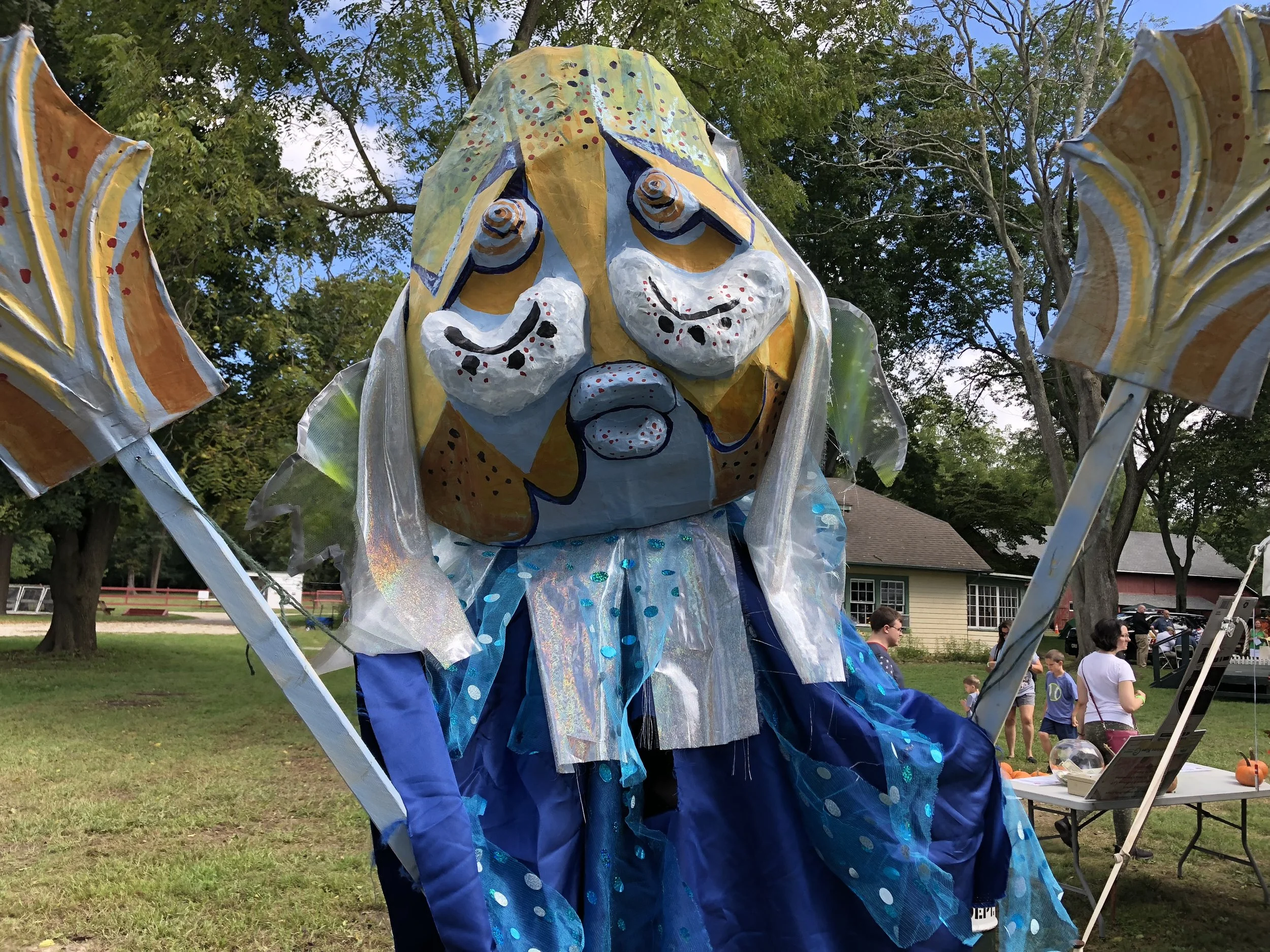The Urban Sketching Handbook
Happy to featured in Urban Sketching Handbook: Reportage and Documentary Drawing: Tips and Techniques for Drawing on Location by Veronica Lawlor.
The drawing featured is a portrait of WWII veteran Tom Dugan. I sketched him during an interview for an oral history project about the men who served aboard the USS Intrepid.
Magic Flute Set Design
I was asked by the Jackson Symphony to create a set design that opened up like a storybook to change scenes, but has the ability to be light weight and break down into 3′x3′ panels for transportation. This was a fun project being able to design the set as well as the panels. The scene begins in the forest and the two center panels open up to reveal the next scene—the queen’s garden.
Assembled the set design measures 6ft x 12ft.
Palace rough sketch
Forest rough sketch
First scene: The Forest
Center panels being moved into the second scene
Second scene: The Queen’s Garden
I collaborated with Steve Zimic who helped with the engineering and construction of the set.
Left: Panels disassembled and in box. Right: Panels being put together
Read more about the project here.
The Mayflower II at Mystic Seaport
I went with Dalvero Academy to Mystic Seaport. I was most excited to revisit the Charles W. Morgan and see the Mayflower II—the newest acquisition at the Mystic Seaport Museum.
The Mayflower II was hauled out of the water to begin the five year restoration. The Mayflower II is owned by Plimoth Plantation and is undergoing a multi-year restoration in Mystic Museum’s Henry B. duPont Preservation Shipyard.
The ship had three masts—Mizzen (aft), Main (midship) and Fore. There is also a spirit sail in the bow area. The design of the Mayflower II was quite different, I thought the ship looked very “English” with two castle like structures fore and aft. These structures—30 foot high were square and bulky making it extremely difficult to sail against the wind. This awkward super structure configuration made the Mayflower unable to sail against the North Atlantic Westerlies. This is the direct reason why the voyage from England to America took over two months.
I enjoyed learning about what the Pilgrims and Adventurers brought to start to the New World. Among the items brought were 126 pairs of shoes, 13 pairs of boots, an assortment of fine clothing, utensils for food preparation such as teacups, as well as pigs, goats, poultry, and some family pets.
Unfortunately I was only able to spend one day due to the cold weather and didn’t get to visit the Morgan. I am looking forward to return!
You can read more about the Mayflower II Restoration on the Mystic Seaport Museum website.
Creative Cup Sketches
Creative Cups is a project that encourages artistic expression in celebration of the lives of those living with breast cancer and those who have lost to this terrible disease. Participants in the project design and build original works of art using bras, which are exhibited and auctioned at a Gala reception at Adelphi University in NY. All money raised goes to offset the costs of running the Adelphi NY Statewide Breast Cancer Hotline & Support Program.
Below are original sketches for my Creative Cups bra.
Read more about the project here.
Whale Naturalist Workshop
“We should stop looking to the stars for extraterrestrial beings, they are here…below us in the ocean.” —John Lilly
I went whale watching as part of a workshop in MA with Dalvero Academy. I saw three different species. We were escorted out by black dolphins, I had never seen this species of dolphin before. Then I saw a fin whale as well as a mama and baby humpback whale with a playful younger whale. They were mythical! All of a sudden you see them blow and exhale air explosively through their blowhole.
I stood along the rail of the boat and called for the whales by humming a tune. The baby humpback was very curious and swam around the boat and right along side where I was standing. I was looking down and saw his beautiful blowhole and his eye. The blowhole appeared heartshaped to me. It was awe inspiring, I have been smiling since. I observed how the dolphins move in human time, the whales however do not, they move on a different time completely. They are in the OM state! I felt like it was an extraterrestrial experience. It was wonderful.
The Whale Naturalist Workshop in Provincetown, MA was co-hosted by Provincetown Center for Coastal studies, Dolphin Fleet of Provincetown and the WDC (Whale and Dolphin Conservation).
Scott Landry made a very powerful presentation on the problem of entanglement. I was not aware of the seriousness of this problem.
In the 1950’s the US government outlawed hemp most likely owing to Dupont. Dupont was releasing nylon products including nylon fishing gear onto the market. Nylon doesn’t break—one its selling points. When the whale gets entangled in the nylon fishing gear there is no way for the whale to get released. Whales get entangled in lobster lines and actually drown because they can’t move. Entanglement is a slow death for the whales. The hemp gear would deteriorate or snap under stress. The numbers of deaths caused from entanglement is staggering.
When we have learned to accord the rest of life on earth equal rights, we can finally take our place in the court of intergalactic opinion and while holding our heads high claim: ‘Yes, there is intelligent life on earth. And it is our species which demonstrates that the blind force of evolution is capable not just of self-destruction but of self-enlightenment.’” —Roger Payne
Updates and thoughts on project processes.

























